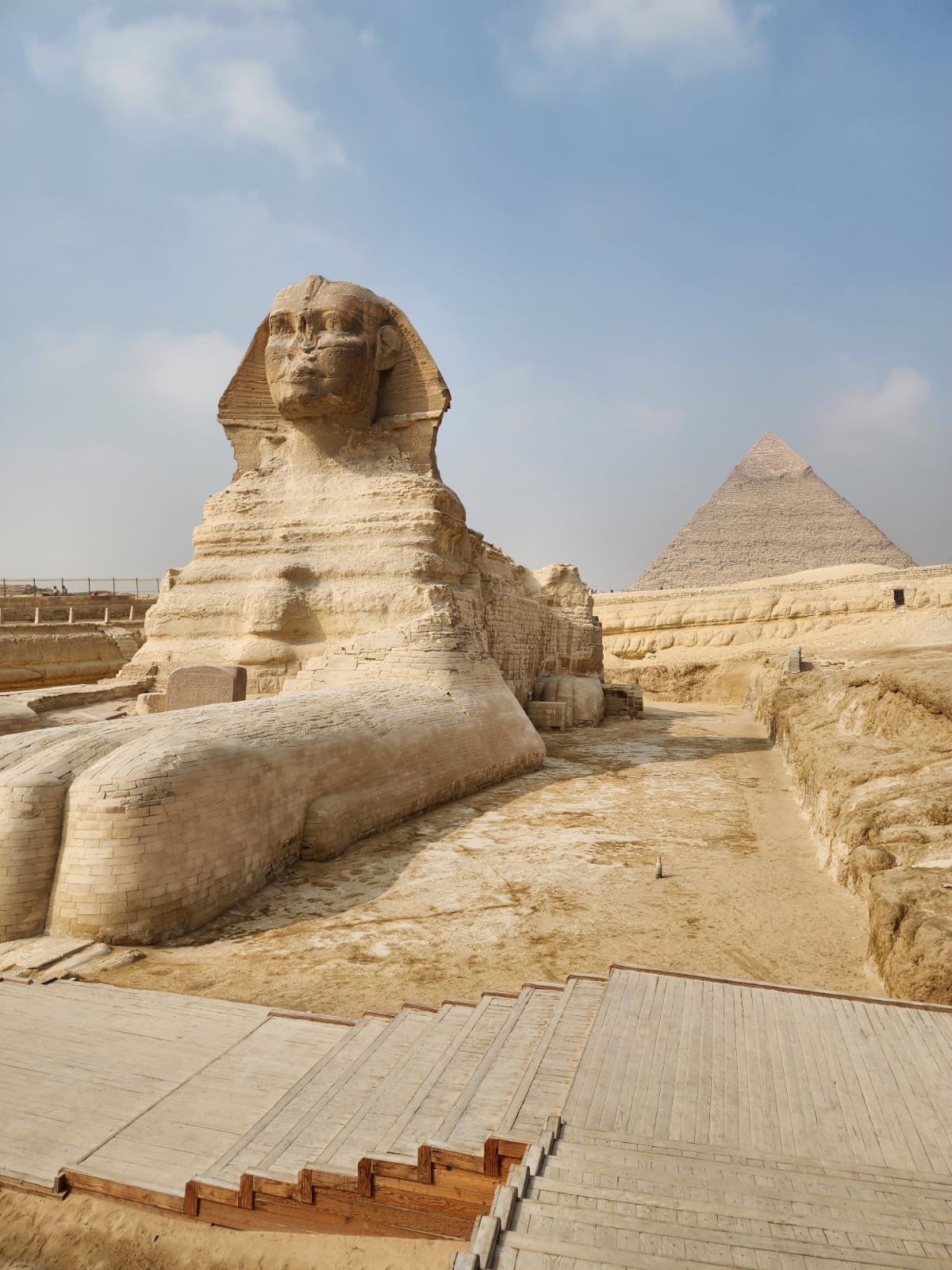Great Sphinx : Unveiling the Enigma of the Great Sphinx of Giza
The Enigma of the Great Sphinx
Immerse yourself in the ancient mystery of the Great Sphinx. A colossal statue with the body of a lion and the head of a human, the Great Sphinx of Giza stands as one of the most enigmatic and iconic monuments in the world. Its imposing presence, shrouded in mystery, has captivated the imagination of explorers, scholars, and travelers for centuries.
What Makes the Great Sphinx a Monument of Ancient Egypt?
Carved from a single piece of limestone, the Sphinx is believed to date back to the Old Kingdom, possibly during the reign of Pharaoh Khafre (c. 2558–2532 BCE). Its sheer size — approximately 240 feet (73 meters) long and 66 feet (20 meters) high — is a remarkable testament to ancient Egyptian engineering.
The head is thought to depict a pharaoh, though debate continues about whether it represents Khafre or Khufu. Originally painted in vibrant colors, only faint traces remain today, leaving behind the mysterious weathered look we see now.
What Is the Dream Stele?
Nestled between the Sphinx’s massive paws lies the Dream Stele, a granite slab erected by Pharaoh Thutmose IV (c. 1400–1390 BCE). According to the inscription, Thutmose dreamt that the Sphinx promised him kingship if he cleared away the sand engulfing it. He fulfilled this promise, restoring the monument and securing his throne.
On our VIP Sphinx Tour, you’ll stand between the paws yourself, reading the Dream Stele up close, and experiencing the same awe Thutmose must have felt.
What Does the Sphinx Symbolize?
The Great Sphinx blends the strength of a lion with the intelligence of a human. This composite image reflected the ancient Egyptians’ view of kingship as both powerful and wise. Its orientation facing the rising sun links it to solar deities, emphasizing the pharaoh’s divine connection.
What Mysteries Still Surround the Sphinx?
Despite centuries of research, the Sphinx keeps many of its secrets. Scholars still debate:
-
Who exactly does the face represent?
-
Was the Sphinx built purely as a guardian, or does it hide deeper meanings?
-
What lies beneath — tunnels, chambers, or symbolic architecture?
Its enigmatic smile and timeless aura ensure that the fascination never ends.
Can You Touch the Sphinx?
Yes — but only on an exclusive VIP tour. Normally, tourists must view the Sphinx from a distance. However, our private access tour allows you to step inside the enclosure, touch its ancient limestone surface, and capture stunning photos standing between its paws.
What Makes This Tour Special?
Unlike standard visits, our tour offers:
-
Private access inside the Sphinx enclosure
-
A chance to touch the monument
-
Exclusive time to examine the Dream Stele
-
Intimate photography opportunities without crowds
It’s a once-in-a-lifetime way to connect with this timeless guardian.
FAQ
Can I touch the Sphinx?
Yes. On our VIP tour, you can step inside the enclosure and touch its ancient surface — an experience unavailable to most visitors.
What makes this tour unique?
It offers private access, allowing you to stand between the paws, examine the Dream Stele, and enjoy the monument without crowds.
What is the Dream Stele?
A granite slab between the paws, inscribed by Pharaoh Thutmose IV, recording his divine dream and the Sphinx’s promise of kingship.
Can I walk inside the Sphinx area?
Yes, our exclusive tour grants you access to the enclosure, where you can explore up close, touch the stone, and capture unforgettable moments.
Explore the Great Sphinx with Egypt Safari Tours
At Egypt Safari Tours, we don’t just take you to the Sphinx — we unlock its secrets. Our expert Egyptologists guide you through its history, myths, and hidden meanings. With special VIP access, you’ll walk between its paws, touch its ancient stone, and read the Dream Stele just as Pharaoh Thutmose IV once did.
Whether combined with the Pyramids of Giza or a full-day Cairo tour, this exclusive experience lets you live history, not just see it.



